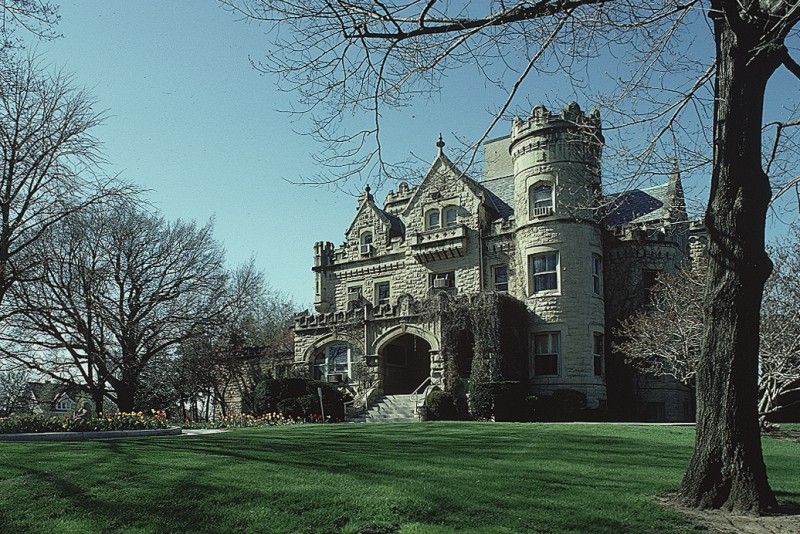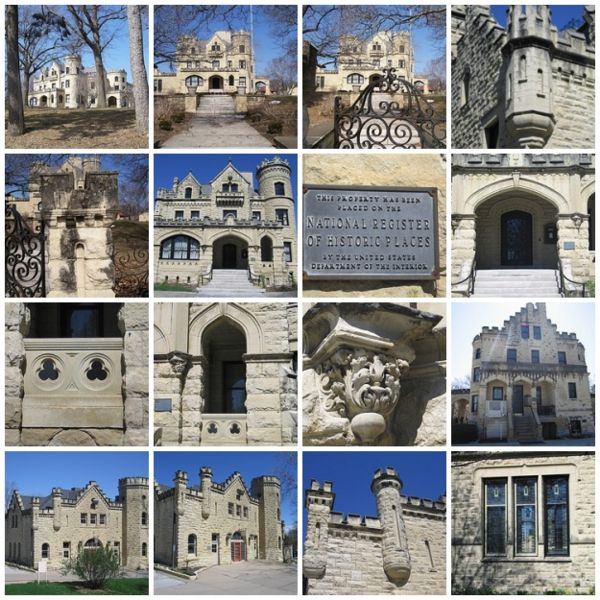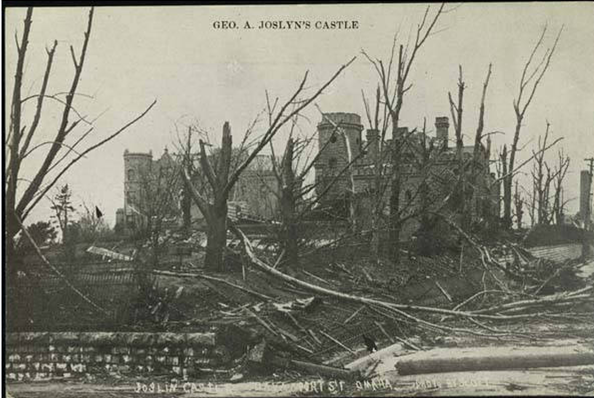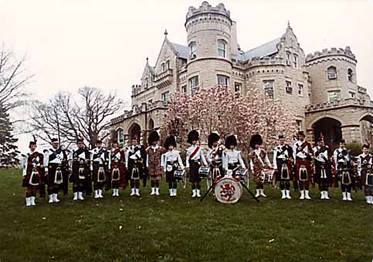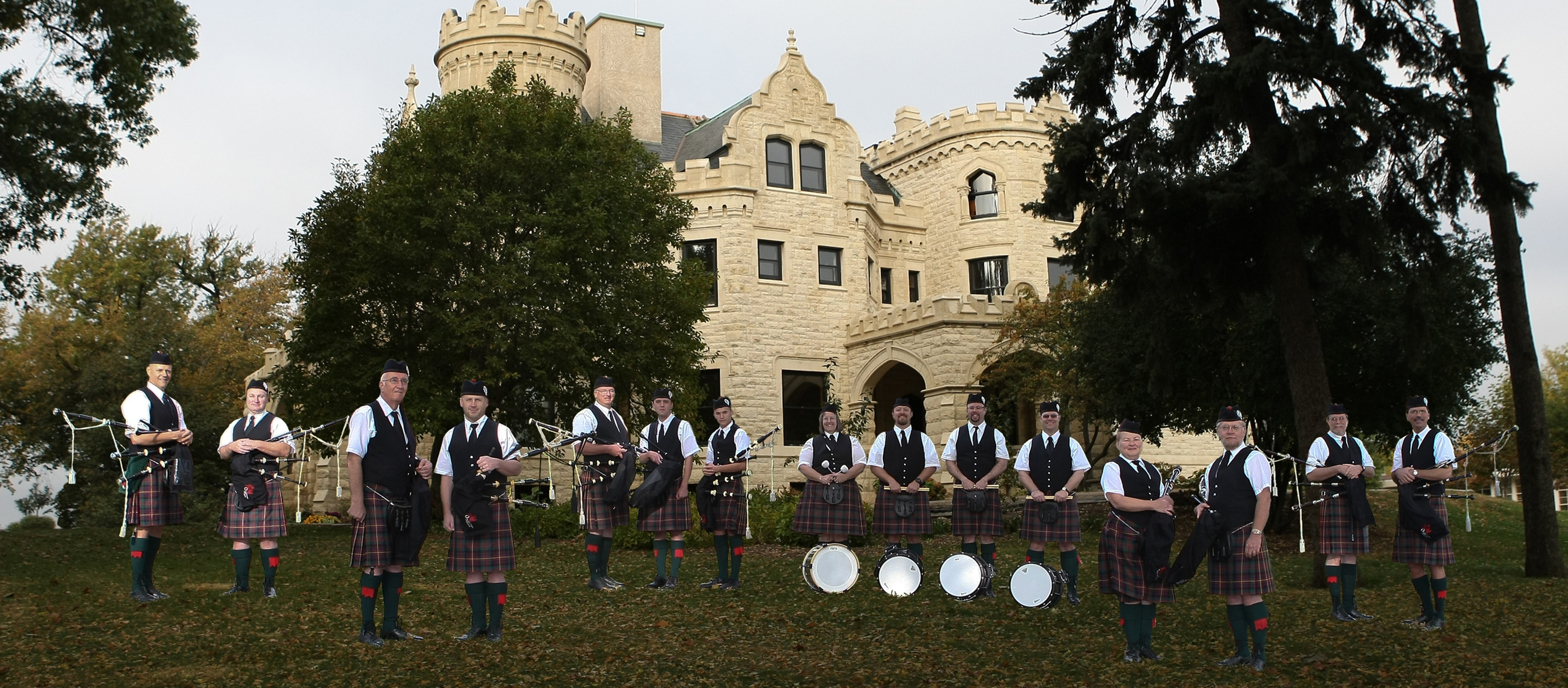| This Week’s Topic… | |

Best viewed in
|
Joslyn Castle
The George and Sarah Joslyn Home, known locally as Joslyn Castle, is located at 3902 Davenport Street in the Gold Coast Historic District of Omaha, Nebraska. Built in the Scottish Baronial style in 1903, the Castle was added to the National Register of Historic Places in 1972 and was designated as an Omaha landmark in 1979. Originally named "Lynhurst" by the Joslyn family, the house was dubbed the “Castle” by neighbors and in early newspaper accounts because of its size and resemblance to castles the Joslyns had visited in Scotland. George Joslyn made his fortune in the ready-print news business and owned the Western Newspaper Union. The Joslyns gave generously to many Omaha-area organizations, including Sarah Joslyn's donation which made Omaha's Joslyn Art Museum possible. Landscaping began on the site in 1893 when George Joslyn purchased what was then the Sutphen Farm. A plan was developed by architect John McDonald that included the massive residence, a carriage house with servants’ quarters, and a gatehouse. Before the mansion was built, a large greenhouse, a palm house, a lily pond for aquatic flowers, and flowerbeds and gardens were planned and built. The estate was enclosed with a limestone wall topped with an ornamental wrought iron fence well before the mansion’s construction was underway. The mansion was not constructed until 1903 at a cost of $250,000—about $6 million in 21st Century dollars. The pace of construction—11 months—was amazing, given the rich use of carved wood, stained glass, chiseled stone, mosaic tiles, and wrought iron.
The 4 story, 35 room mansion includes a reception hall, music room, ballroom, a library and gold drawing room. The basement at one time had a bowling alley. The Castle and the carriage house were built of Kansas silverdale limestone. There is a wrought iron door on the Castle that weighs over a ton. Landscape architect Jens Jensen created an informal setting for the 5.5 acre site. Over 100 mature trees as well as a wide array of bushes and flowers were planted. They built a greenhouse to provide a constantly changing display of flowers for the giant flowerbeds on the estate. By 1899, the grounds were developed and the greenhouse completed. Sarah developed a nationally respected collection of orchids in the greenhouse. Jensen is also known to have done rock work and pools for the conservatory inside the house. On Easter Sunday morning, March 23, 1913, Mrs. Joslyn took her friends to the green house to view her orchid collection. That afternoon, one of the city’s worst tornados destroyed the greenhouse, much of the Castle grounds (shown below), and a wide swath of Omaha. While the orchids survived the tornado itself, a hard freeze followed on the heels of the tornado, destroying the collection.
George had the remnants of the greenhouse removed and replaced with a six-sided clapboard summer house. On its east side was a grape arbor and squirrel house. Also destroyed were a small lake and bridge to the west of the Castle. Today the bridge remains, and an outline of the small lake is visible.
George Joslyn died in 1916, in his sixties. Sarah lived on the estate until her death in 1940 at age 88. In 1944, the Castle became the headquarters of the Omaha Public Schools district. Some of the walls of the original greenhouses were incorporated into an (1958) office annex by the district. In 1989, the school system moved to a larger facility in the former Tech High School building. The Castle then became the property of the State of Nebraska. In 1996, the Joslyn Castle became home of the Joslyn Castle Institute for Sustainable Communities. The Institute is charged by the State of Nebraska with managing and preserving the estate. More recently, in 2008 a powerful storm moved through the Omaha metro area. The storm produced golf ball size hail and winds speeds of over 80mph. The Joslyn Castle grounds sustained extensive tree damage including some of the same trees that survived the 1913 Easter Tornado. |
